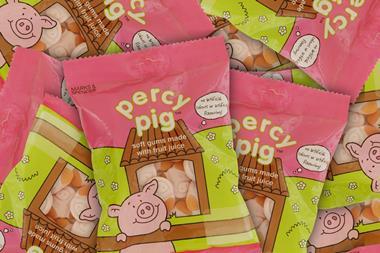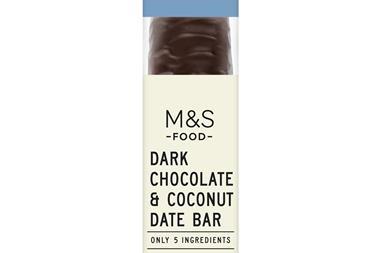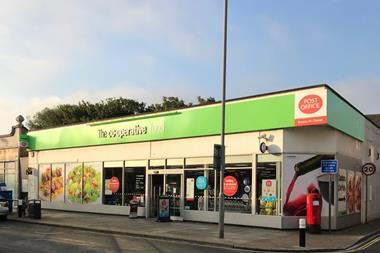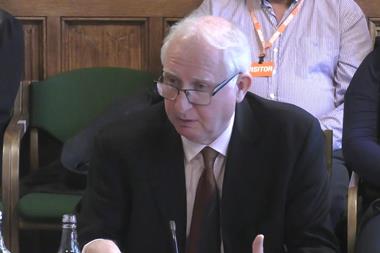In the recession, people did not turn to chocolate for comfort, so suppliers had to shore up sales with ads and promotions
This year hasn’t been a sweet one for chocolate. On the surface, the 2.6% growth in the category looks like an improvement on last year, when the category grew just 2.2%, but the underlying figures tell a different story.
Despite chocolate being seen as a recession stalwart – a treat people don’t give up despite lower incomes – consumption has dropped off dramatically. Volume sales of chocolate fell a hefty 2.6% in 2009 and value sales growth was propped up by substantial cost inflation, principally from rocketing cocoa prices caused by supply chaos on the Ivory Coast.
Thankfully, it wasn’t all doom and gloom this year, as sustained advertising and promotional activity managed to boost sales of almost all key brands.
Category leader Cadbury Dairy Milk grew sales 0.5% to top £371m, while Galaxy slightly closed the gap with 1.3% growth to £191.6m sales.
But the standout success story at the top of the table was Nestlé’s flagship brand Kit Kat. Just two years ago, Kit Kat was floundering in seventh place, with sales of £70m. This year, thanks to a massive £24m ad spend across the Kit Kat portfolio, confectionery sales alone topped £100m for the first time, with a massive 10.9% year-on-year growth, overtaking the Mars bar.
Jonathan Summerley, senior buyer at confectionery wholesaler Hancocks, believes the brand is making up for lost time. “Previously, Nestlé had a bad few years. Two or three years ago, there were all sorts of quality issues, which have now been resolved.
“It’s possible Kit Kat is just now getting back to where it should be, in sales terms. But it’s big news that it’s broken through the £100m barrier.”
With the two-finger biscuit variant accounting for a further £91.5m in sales, an 8.9% improvement, “2009 has been a great year for Kit Kat”, says Nestlé trade communications manager Graham Walker. “Backed by the biggest confectionery campaign ever, the brand has performed exceptionally well. Next year, Nestlé will continue to put its money where its brands are and will be supporting Kit Kat with an unsurpassed spend of £25m.”
Aside from Kit Kat, Hancocks’ Summerley bemoans the lack of innovation in the sector over the past year, saying it’s fun and novelty that drive growth in the category – “whatever manufacturers say”. One low-key innovation he is happy to support is price- marking, which, he says helps independents – who traditionally strongly over-trade in confectionery – compete with multiples.
“Price-marking in chocolate has markedly increased,” he says. “And from our point of view, it’s a good thing. Consumers are aware of supermarkets’ strength, so marked packs give independents a chance to compete. It creates discipline in the supply chain. Over the year, we’ve had double-digit growth in confectionery. There’s no doubt in my mind that price-marking has helped.”
Summerley’s big disappointment of the year may come as a surprise to anyone who studies the Top Products table – it’s Wispa. The huge 430% growth rate is artificially boosted by Wispas being on sale for just a small portion of last year, but the fact the resurrected brand has topped £58m of sales this year is a stellar achievement.
The disappointment for Summerley lies in this year’s brand extension Wispa Gold, and he admits it stems from high expectations.
“Wispa blue is still selling well, but the Gold bars didn’t perform as well as the original Wispa launch last year. We were hoping they’d be as strong as Wispa blue, but this wasn’t the case. With hindsight, our expectations were probably too high: follow-up launches never perform quite so strongly as the first time around.”
Wispa was the only new entrant into this year’s top 20 after a relatively stagnant year between the big brands.
Ironically, it was Cadbury bidder Kraft that Wispa knocked out, as sales of Terry’s Chocolate Orange dropped 7.8%, taking it below the £40m mark – leaving the US food giant with no presence whatsoever in the upper echelons of the UK confectionery sector.
Ferrero, another potential Cadbury suitor, also had a disappointing year, as sales of the flagship Ferrero Rocher range fell 4.1% over the year, despite the launch at the beginning of 2009 of two new varieties.
Thornton’s was the only non-big three manufacturer to show a solid top 20 performance, as its decision to focus on sales in the major retailers paid further dividends. Thorntons chocolates rose from 13th to 12th, with impressive sales growth of 21.3%.
Despite the complaints about lack of innovation, the big three haven’t been cooling their heels. In addition to new product launches, including Treets from Mars, Nibbles and Clusters from Cadbury and Kit Kat Chunky Caramel from Nestlé, the big three have been buffing up their ethical credentials.
Cadbury was the most high-profile of the three, moving its entire Dairy Milk range into the Fairtrade scheme, but behind the scenes Mars and Nestlé took action, too: Mars pledged to use only sustainable cocoa across its full range by 2020, while Nestlé has promised to use only certified sustainable palm oil by 2015.
The big three have also been frenetically busy dealing with staggering cost inflation. While other categories have seen the cost of their main inputs plummet, cocoa, sugar and palm oil all cost at least 40% more year-on-year.
This, coupled with fears of a consumer recession, has led to numerous subtle pack size changes: shrinking bars, smaller multipacks and cuts in case sizes to wholesalers and independents, all in an effort to avoid price rises.
The relatively static top 20 table therefore belies feverish activity below the surface. With ethical credentials under fire, consumers willing to abandon treats in a recession, and nigh-on unprecedented raw material costs, perhaps standing still is no mean feat.
Top launch: Cadbury Clusters, Cadbury
Cadbury Clusters were launched in March as one of Cadbury’s new range of four sharing bags – but the chocolate, raisin and cornflake combo has fast emerged as the standout. The range represented Cadbury’s effort to up its presence in the growing bagged snacks category, already worth £647m a year [Nielsen].
Unlike most of Cadbury’s new bagged snacks, Clusters are also available as a 50g on-the-go bag that is well-suited to indies.
Top Products Survey 2009

















No comments yet